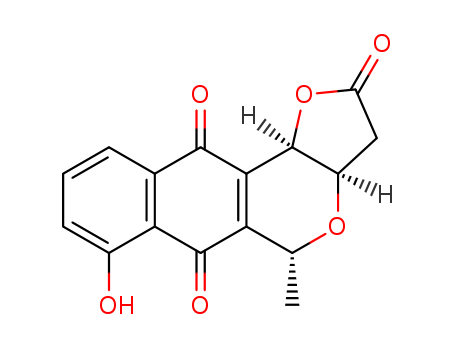Technology Process of Kalafungin
There total 28 articles about Kalafungin which
guide to synthetic route it.
The literature collected by LookChem mainly comes from the sharing of users and the free literature resources found by Internet computing technology. We keep the original model of the professional version of literature to make it easier and faster for users to retrieve and use. At the same time, we analyze and calculate the most feasible synthesis route with the highest yield for your reference as below:
synthetic route:
- Guidance literature:
-
With
boron tribromide;
In
dichloromethane;
at -50 - 20 ℃;
for 2.41667h;
DOI:10.1055/s-2005-868505
- Guidance literature:
-
Multi-step reaction with 5 steps
1.1: 85 percent / Et3N; DMAP / CH2Cl2 / 8 h / 20 °C
2.1: NaBr; Ph3P; i-Pr2NEt / Pd2(dba)3 / 6 h / 50 °C
2.2: (DHQD)2-PHAL; K3Fe(CN)6; aq. K2CO3 / MeSO2NH2; K2Os2(OH)4 / 2-methyl-propan-2-ol / 36 h / 0 - 20 °C
3.1: 92 percent / BF3*Et2O / diethyl ether; tetrahydrofuran / 12 h / 20 °C
4.1: 87 percent / aq. (NH4)2Ce(NO3)6 / acetonitrile / 0.25 h / 20 °C
5.1: 75 percent / BBr3 / CH2Cl2 / 2.42 h / -50 - 20 °C
With
dmap; ammonium cerium(IV) nitrate; boron trifluoride diethyl etherate; boron tribromide; triethylamine; N-ethyl-N,N-diisopropylamine; triphenylphosphine; sodium bromide;
tris(dibenzylideneacetone)dipalladium (0);
In
tetrahydrofuran; diethyl ether; dichloromethane; acetonitrile;
2.2: Sharpless' asymmetric dihydroxylation / 3.1: oxa-Pictet-Spengler cyclization;
DOI:10.1055/s-2005-868505




